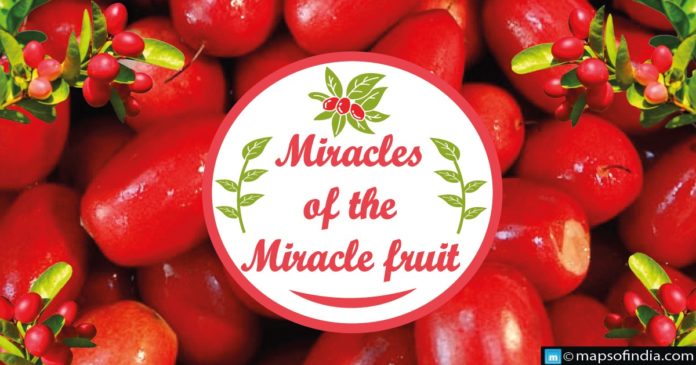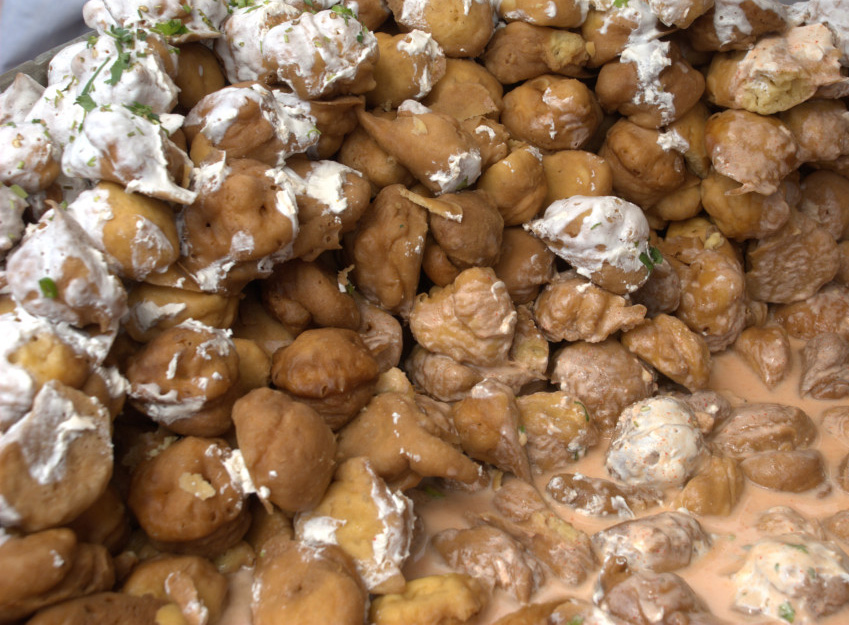Miracle fruit, also known as miracle berry, was first documented in 1725. A French explorer searched West Africa for undiscovered fruits and noticed The local people eating a unique fruit called Miracle fruit.
The miracle fruit plant is classified as a shrub native to ghana. These evergreen shrubs prefer acid soil, partial shades and high humidity, but they can tolerate drought and full sun. Unfortunately, these shrubs cannot tolerate frost.
Miracle fruit plants have dense foliage and attractive leaves and berries. The slow-growing shrubs can reach 15 feet in their native habitat but are often about 5-6 feet tall in other areas. Miracle fruit is grown from seed. Typically plants begin to fruit when they are 3-4 years old.
What is a Miracle Fruit?
Miracle fruit is a small red fruit with a large seed. The plant produces rather inconspicuous white flowers a few times each year. Fruit forms in 35 to 45 days. The bright red fruit usually hangs in small clusters at the tips of small thin branches.
Its Taste:
The plum has a pleasantly sweet, subacid flavour, but the fruit is usually not consumed for its flavour or nutritious but rather for its effect on the taste of other fruits. Miracle fruit contains miraculin, a glycoprotein that blocks the sour and bitter taste receptors in your tongue. The taste-altering effect of miraculin lasts from 30 minutes to a few hours, depending on the individual. If you eat Miracle fruit, then eat a lemon. The lemon will taste like lemonade or even a sweet orange. So not only are our sour and bitter flavours blocked, but miraculin in the presence of acidic foods intensifies the sweet flavour.
Benefits of Miracle Fruit:
- Miracle fruit helps people who are receiving chemotherapy. Chemotherapy can make food have a metallic taste. After eating Miracle fruit chemotherapy, patients often enjoy food for the first time in several months.
- Miracle fruit is most well known for its ability to block sour and bitter flavours and enhance sweet flavours.
- Miraculin also blocks salt receptors in the tongue. The salt blocking effect is helpful to people who swim long distances in the ocean and people who are preparing for a colonoscopy.
- The berries of miracle fruit are used as medicine. It is a low-calorie, sugar-free fruit packed with lots of healthy nutrients for the human body.
Miracles of the miracle fruit
Some people throw miracle fruit parties where guests eat miracle fruit then taste an assortment of familiar foods, incredibly sour and bitter food. It is somewhat perishable at room temperature; the fruit lasts 2-4 days.
If heated, the miraculin is neutralised, and the fruit will no longer alternate the taste of other foods. However, Miraculin is still active if the fruit has been frozen. Dieticians and diabetic patients are particularly interested in miracle fruit.
In Japan, miracle fruit is often prescribed for people with diabetes. Freeze-dried miracle fruit is available in many parts of the world. However, in some countries, Miracle fruit is still being studied.





